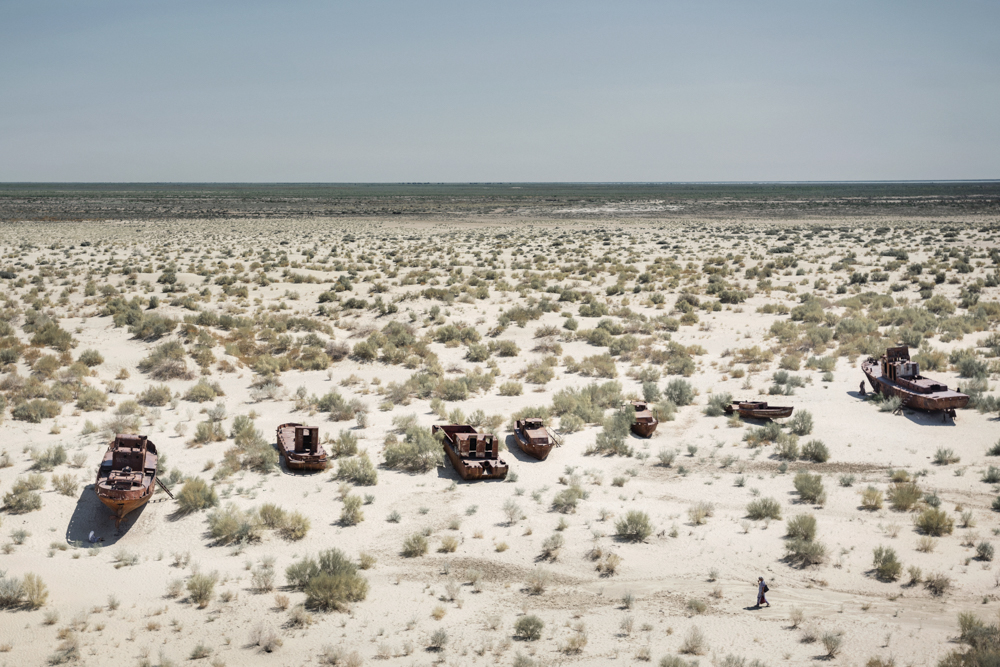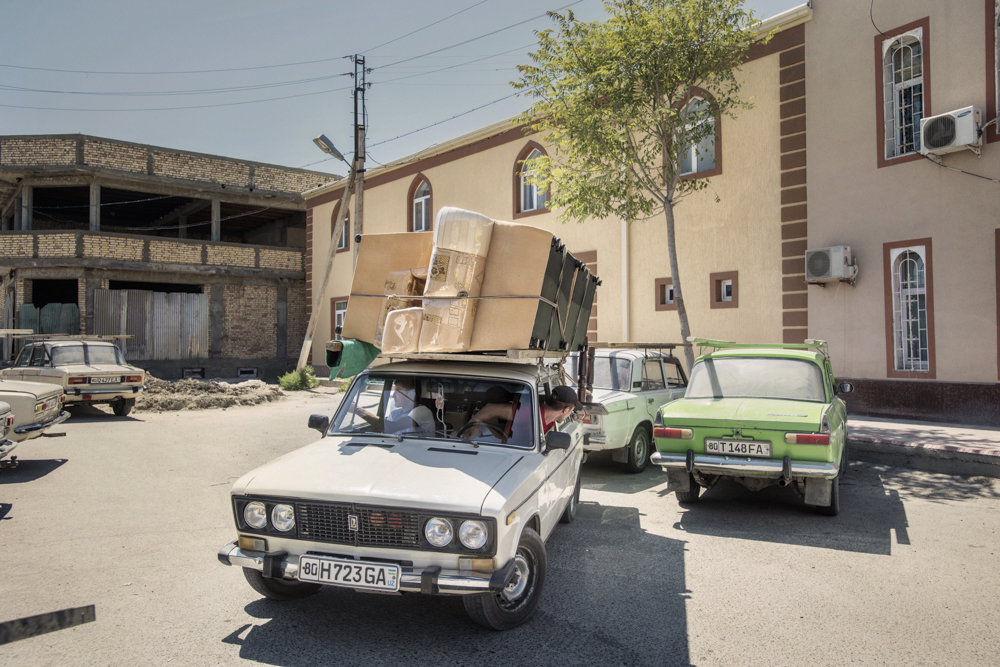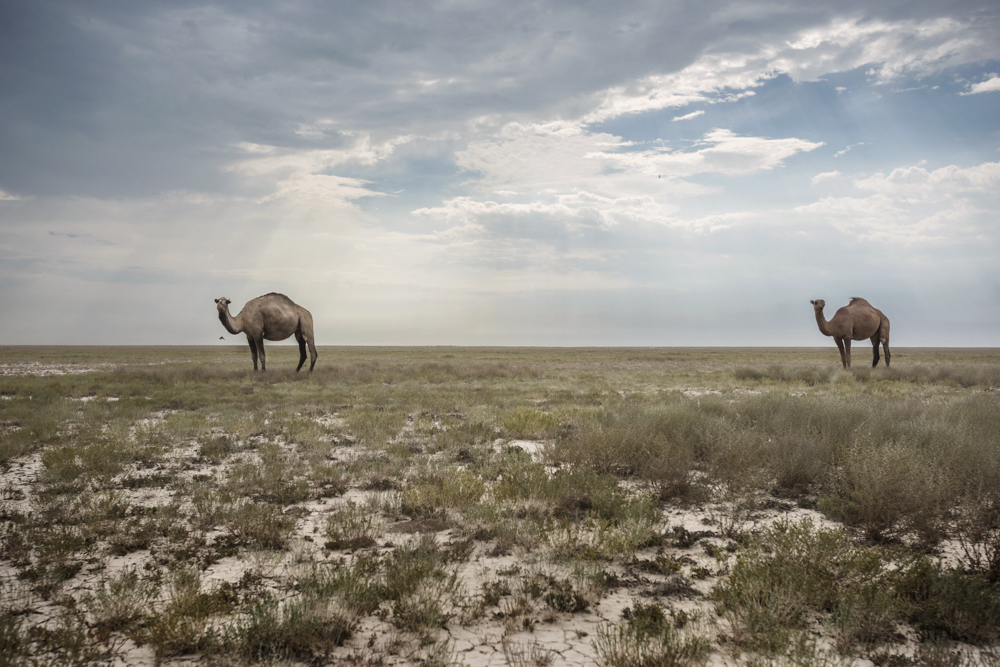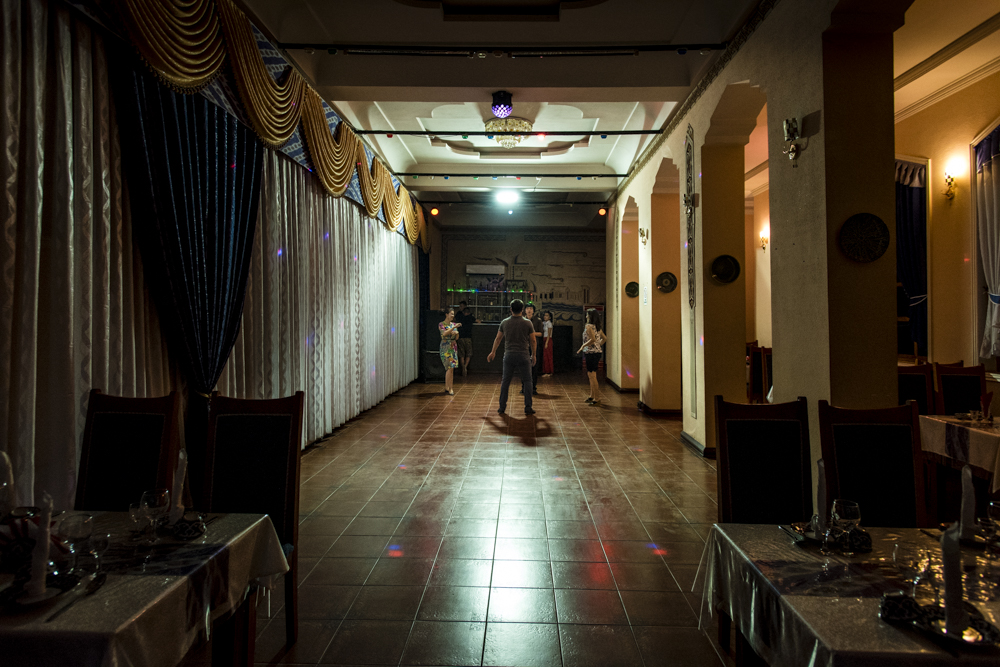For centuries, the Silk Road connected the West with the East: a network of walkways, paths, trails That overlap each other and reach cities Whose names still evoke the glories, mysteries, adventure.
But the Silk Road was Also at the center of one deadly project: "The great plan for the transformation of nature", of Stalin.
Since the surrounding areas were mostly desert, the Soviet government started to transform the environment by diverting the course of the rivers who fed the Aral, in order to grow cotton.
Today, the Aral Sea, once the fourth largest lake in the world, has been replaced by a flat of salt and the progressive desertification has led to a growing environmental crisis, which has devastated economy, health and the fabric of communities of an entire society for future generations.
"The worst ecological disaster in the history of mankind", is how Al Gore, in his book "Earth in the Balance", defines the story of the Aral Sea, sentenced to death by the Soviet economic policy. Recently, UN Secretary General Ban Ki-moon, visiting the area, described the phenomenon as "One of the most shocking disasters on the planet."
The Aral Sea has become the place of absence.
professional category
Aralkum - A man made desert (Series)
DESCRIPTION
AUTHOR
Simone Tramonte was born in Rome in 1976 and after graduating in Economics he decided to devote his attention to photography. He is a freelance photographer that works and is mainly based in Italy.
He began photographic studies with particular attention to social and anthropological issues.
Involved in documentary photography since the 2007, his work is focused to documenting contemporary issues and the profound cultural changes.
His projects have been published in international magazines such as Internazionale, NationalGeographic, Geo, Indipendent, The Guardian, The Telegraph, Southeast Asia Globe, CameraRaw, TheTripMagazine, Sguardi.
This works has been exhibited at Fotoleggendo in Rome, at the Chiostro del Bramante in Rome, at the ArtBasel of Basel, at the Kolga Tbilisi Festival of Georgia.
He has been awarded some international prizes:
1st prize "Geo Magazine" - 2013
1st prize "UBS Art Collection" – 2011
2nd prize "Science-Environment” category – MIFA - 2016
2nd prize "Editorial-Environmental” category – IPOTY – 2016
2nd prize "People-Culture” category – MIFA - 2015
2nd prize "Press-Environmental” category – PX3 – 2015
3rd prize – FIIPA (FIOF Awards) – 2016
Remarkable Award – Siena International Photo Awards – 2015
Shortlisted – KOLGA TBILISI PHOTO AWARDS – 2016
He began photographic studies with particular attention to social and anthropological issues.
Involved in documentary photography since the 2007, his work is focused to documenting contemporary issues and the profound cultural changes.
His projects have been published in international magazines such as Internazionale, NationalGeographic, Geo, Indipendent, The Guardian, The Telegraph, Southeast Asia Globe, CameraRaw, TheTripMagazine, Sguardi.
This works has been exhibited at Fotoleggendo in Rome, at the Chiostro del Bramante in Rome, at the ArtBasel of Basel, at the Kolga Tbilisi Festival of Georgia.
He has been awarded some international prizes:
1st prize "Geo Magazine" - 2013
1st prize "UBS Art Collection" – 2011
2nd prize "Science-Environment” category – MIFA - 2016
2nd prize "Editorial-Environmental” category – IPOTY – 2016
2nd prize "People-Culture” category – MIFA - 2015
2nd prize "Press-Environmental” category – PX3 – 2015
3rd prize – FIIPA (FIOF Awards) – 2016
Remarkable Award – Siena International Photo Awards – 2015
Shortlisted – KOLGA TBILISI PHOTO AWARDS – 2016
back to gallery







